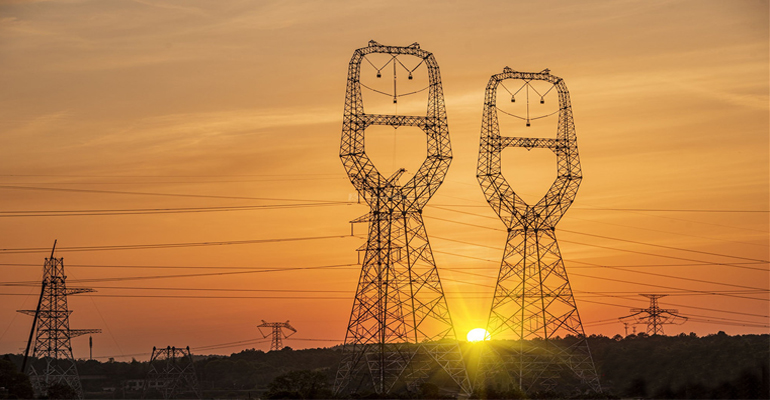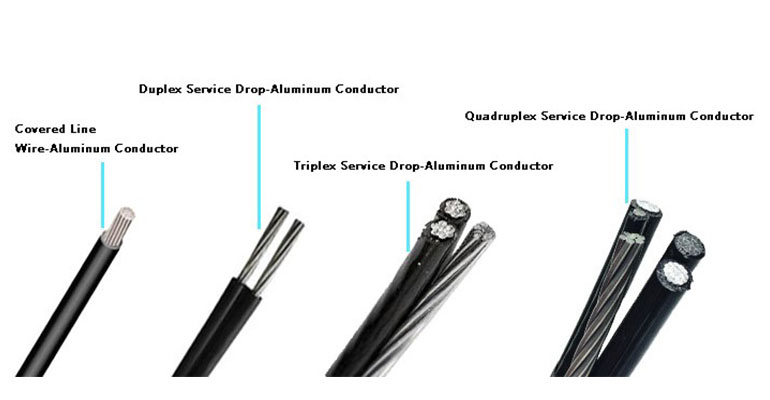- Offices Time:24 Hours Online
- Email:[email protected]
- WhatsApp:+8618339938759

Posted on October 27, 2022
What are the laying requirements for overhead cables?
Aerial insulated cable is an overhead conductor equipped with an insulating layer and a protective sheath. It is a special cable manufactured by a production process similar to cross-linked cables. It is a new transmission method between overhead conductors and underground cables. Aerial cables are all single-core, and can be divided into hard aluminum wire structure, hard drawn copper wire structure, aluminum alloy wire structure, steel core or aluminum alloy core support structure and self-supporting three-core structure according to their different structures. It has the main characteristics of high power supply reliability, good power supply safety, convenient erection and maintenance, and reasonable economy. Its main technical parameters include weather resistance, insulation level, inner and outer semi-conductive shielding layers. Aerial cables are widely used in power transmission at home and abroad.
1.Overhead cable laying requirements
(1)Overhead cable laying is a method different from conventional underground cable laying. It is because of special reasons such as other underground pipelines or municipal public facilities in the city, when the cables cannot be laid underground or when general overhead lines are used, the cables can be laid overhead.
(2)The cross-section of the steel strand used for cable overhead should be selected according to the span, load and mechanical strength of the cable line, and its MINI cross-section should not be less than 10mm2. The spacing between the fixed points of the steel core aluminum stranded wire should be less than 0.75m; the spacing between the fixed points of the control cable should be less than 0.6m.
(3)When the cable line is laid overhead, the net distance from the heat pipe should be greater than 1m; when the net distance is less than or equal to 1m, heat insulation measures should be adopted. The net distance between the cable and the non-thermal pipeline should be greater than 0.5m. When the net distance is less than or equal to 0.5m, it should be taken on the cable section that is close to the pipeline or extends not less than 0.5m from both ends of the section. Measures against mechanical damage to cables.
(4)Professional construction. The laying and installation of overhead cables is by no means for ordinary people. If there is no professional installation knowledge and skills, and the installation is not carried out in accordance with relevant specifications, the installed cable system may not operate normally in the later stage. This work must be operated by professional construction units and professionals. Even if workers are invited to install, the necessary training and learning must be carried out in the early stage.
(5)Control the construction rhythm. Overhead cable laying facilities can currently be installed manually or by mechanical means. When using manpower to lay, it is necessary to achieve unified command, grasp the rhythm, and the interval of about 2 meters. If mechanical laying is used, the traction force should be moderate in size and uniform in force to avoid damage to the cable.
(6)Pay attention to the direction of the head. When laying the cable, you must carefully check whether the head of the cable is in good condition. During the specific operation, you should also pay attention to the rotation direction of the cable reel. Do not flatten or scratch the outer jacket of the cable. In addition, during construction in the low temperature season in winter, the cable must not be beaten to straighten the bent cable to avoid cracking of the outer insulation and sheath.

2.Construction scheme of overhead cable
(1) Overhead laying construction process: Overhead cables should be laid along poles, brackets or walls and fixed with insulators. The binding wires must be insulated wires. The distance between the fixing points should ensure that the cables can withstand the load brought by themselves, and the laying height should be It meets the requirements, but the large arc vertical distance shall not be less than 2.0m when laying along the wall.
(2) Electricity for cable laying and decoration construction in the construction in progress
The cable lines in the construction under construction must be introduced by buried cables, and it is strictly forbidden to enter through the scaffolding. The vertical laying of cables should make full use of the shafts, vertical holes, etc. of the construction in progress, and should be close to the power load center, and the fixed point should not be less than one per floor. The horizontal laying of cables should be rigidly fixed along the wall or doorway, and the large arc vertical distance should not be less than 2.0m. For decoration projects or other special stages, a single construction electricity plan should be supplemented. The power cord can be laid along the corners and the ground, and measures to prevent mechanical damage and electric fire shall be taken.
Post categories
Most Popular Posts
-
The 136th Canton Fair welcomes you to participate!
October 12, 2024 -
High temperature cable introduction
July 26, 2024 -
Kenya Power and Energy Exhibition 2024
June 11, 2024 -
Introduction of rubber sheathed cable
June 5, 2024





